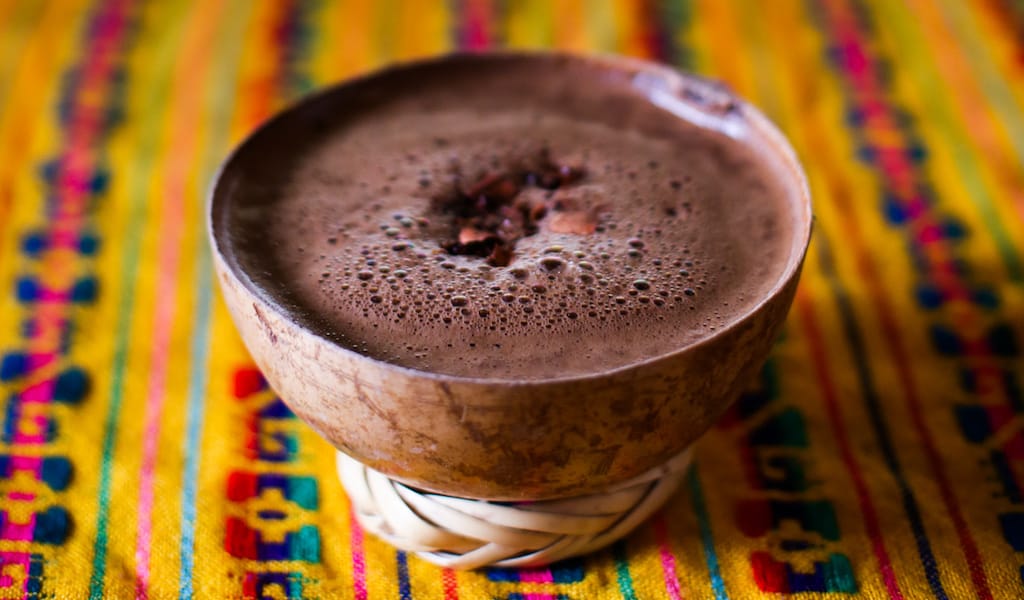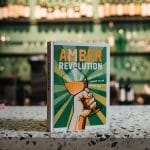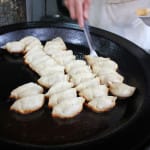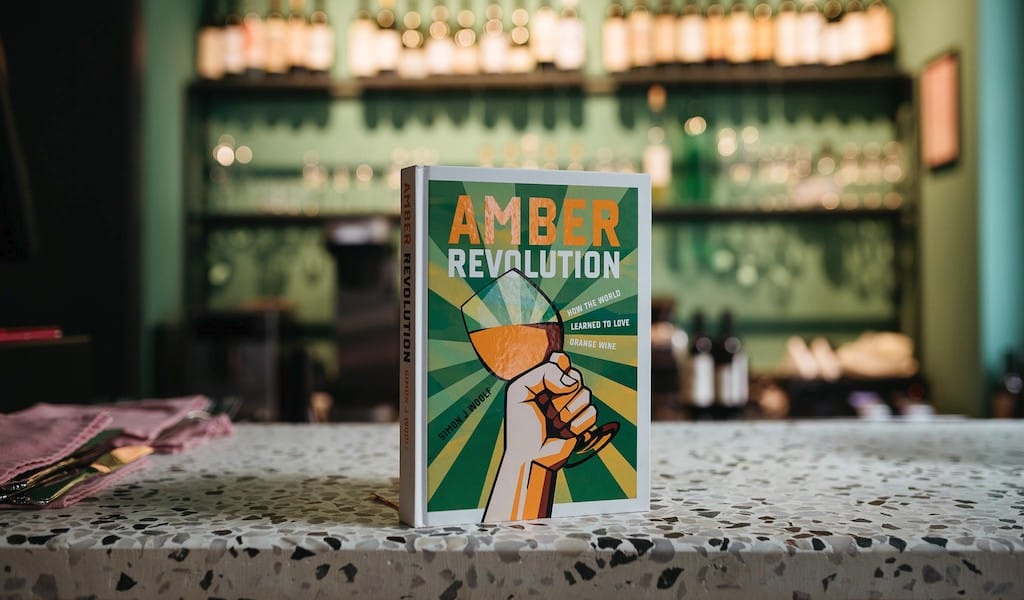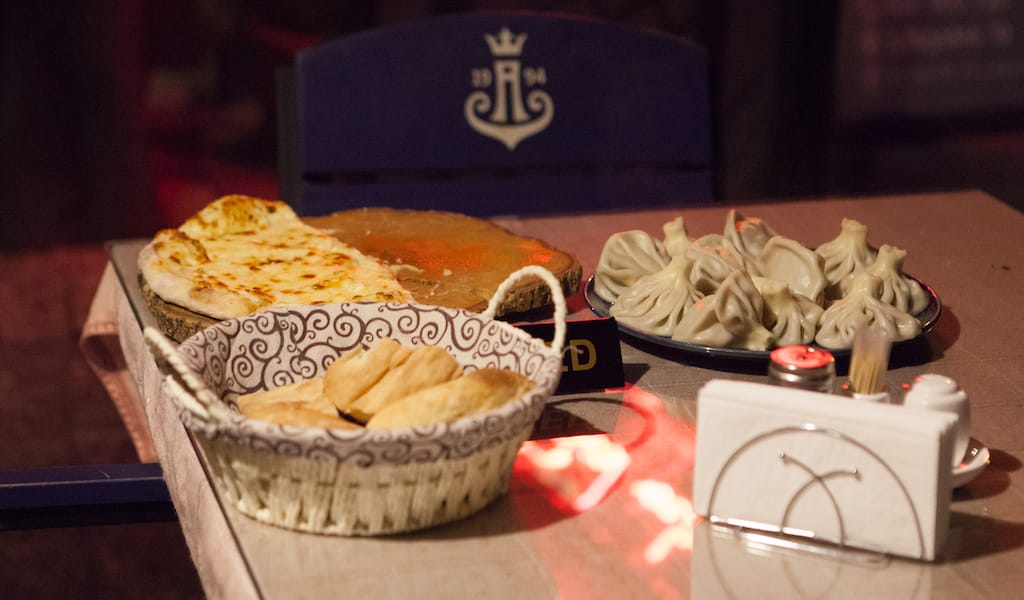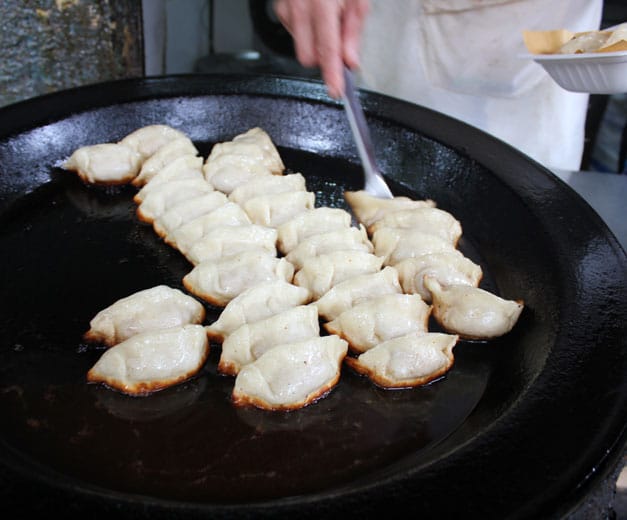Initially, it was books that led Fernando Rodriguez Delgado to his interest in cacao. Today Rodriguez runs Chocolate Macondo, a café that specializes in ancient preparations of cacao, but prior to that he was a bookseller, fanatical about reading and fascinated by the history of Mexico.
The day that he came across the Florentine Codex, a 16th-century manuscript documenting Mesoamerican culture, was an important one: it would eventually spark his countrywide search to discover the traditions of cacao and seek out ingredients, the names of which he only knew in Nahuatl. Rodriguez didn’t speak this native language of Mexico, so trying to work out the recipes for cacao drinks he found in the codex was no easy task.
“They put mecaxochitl [in the cacao drink],” Rodriguez told us during a recent visit to his café. “But what is mecaxochitl?” he added with a laugh.
Rodriguez’s kind face revealed a little glint in his eye as he remembered his multilingual search for ingredients for a cacao drink referred to as atlaquetzalli, or “precious water,” in the ancient codex.
“We dedicated ourselves to finding the recipe. We thought it was unique,” continued Rodriguez.
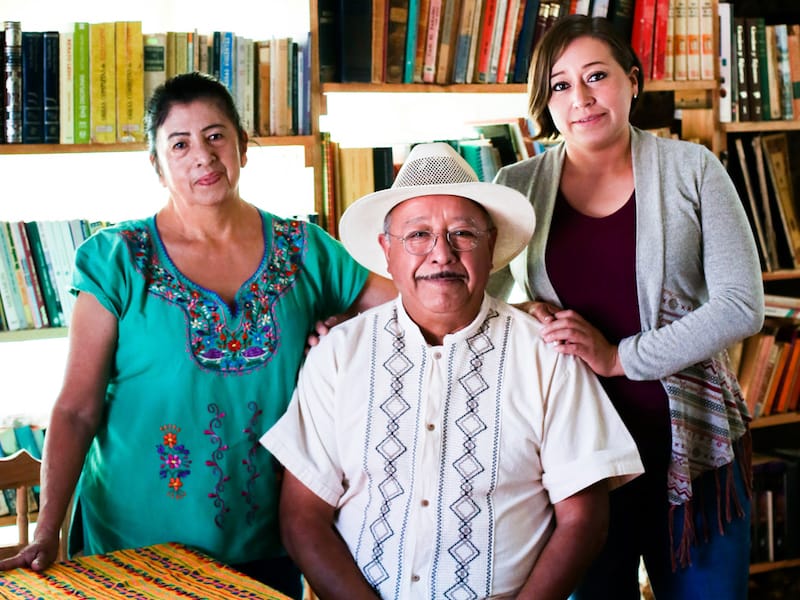
It turned out, however, that all of the different cacao drinks infused with any combination of herbs, fruits and spices were referred to by the common name of atlaquetzalli in the Florentine Codex, regardless of the extra ingredients added to the cacao water. The codex was an ethnographic study written by the Spanish Franciscan friar Bernardino de Sahagún. The study, which was conducted in partnership with his indigenous students, documents the cosmology, rituals and way of life of the Mexica people. While written with the motive of converting the indigenous Mexicans to Catholicism, it is now an important document for understanding how native Mexicans lived and saw the world before the conquest worked to remove many of the ancient traditions.
As we sat in the Chocolate Macondo café, sipping on warm cacao drinks infused with hoja santa (a fragrant herb), pepper and chiles, we were just a five-minute drive away from the ancient city of Teotihuacan, revered by the Mexica people as the Birthplace of the Gods.
The proximity of the mighty Pyramid of the Sun and Moon to this café full of books about ancient Mexico, traditional clay chocolate pots and volcanic rock grinding stones, made every sip of our spicy cacao drink feel like a connection to Mexico’s past.
“We feel that our work is to restore and reconnect to the use of cacao here in the Central Mexican Plateau,” explained Rodriguez, whose interest in cacao took him across Mexico to discover more about how the ingredient was being used countrywide.
“We feel that our work is to restore and reconnect to the use of cacao here in the Central Mexican Plateau.”
His travels led him to the discovery that in Southern Mexico cacao was consumed in traditional Mesoamerican ways (grinding down pure cacao beans and mixing it with water), while in central Mexico, the heartland of the Mexica and the area that took the biggest brunt of the Spanish conquest, the traditions had been lost and replaced with “European customs,” such as combining cacao or even cocoa solids with milk and chocolate bars that barely contained any cacao.
So, deciding to do his part in restoring these traditions, he bought a cacao grinder. Rodriguez would grind the cacao beans for a while and then the grinder would get stuck. He would leave it for a few days before trying again, but the same would happen. This went on for a year until one day it suddenly worked, and he was inspired to play his part in reintroducing traditional cacao products to Central Mexico. The cacao grinder has continued to grind the cacao – which comes from the jungles of Chiapas – into powder to this day.
Initially, Rodriguez worked with his brother, who is an herbalist, making bars of chocolate with different herbs and spices. However, realizing that they couldn’t compete with the big-name chocolate makers, they turned their hand to something more unique: the “precious water.”
Now, some eight years since making their first cacao drinks, the family has traveled around the country sharing these traditional Mesoamerican spiced cacao concoctions at festivals and fairs. Alongside the drinks, they often offer performances of traditional Mexica music and dance. For Rodriguez, “there is a historical, cultural and scientific reason” for their work.
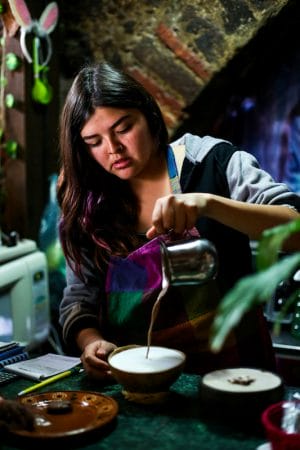 Chocolate Macondo has made packs of their different chocolate drinks, which are for sale in powder form. If a customer falls in love with Chocolate Macondo’s special creations such as the warming Quetzalpapalotl drink infused with ginger, rosemary and cinnamon or the uplifting Tlexochitl with damiana flowers and mint, they can buy the ready-made formula to recreate it at home.
Chocolate Macondo has made packs of their different chocolate drinks, which are for sale in powder form. If a customer falls in love with Chocolate Macondo’s special creations such as the warming Quetzalpapalotl drink infused with ginger, rosemary and cinnamon or the uplifting Tlexochitl with damiana flowers and mint, they can buy the ready-made formula to recreate it at home.
The café in which we sat has been open for two years, and according to Arjelia Rodriguez Rojas, Fernando’s daughter, they have had visitors from all over the world, “even some who left comments in Arabic and other languages,” in the visitor book that sits open, full of glowing reviews.
The café sells vegetarian tamales too, made by a chef in Mexico City. Rodriguez’s research led him to discover that across many parts of the country, cacao and corn were often consumed together.
“So, it made sense to sell tamales,” he said.
And the combination of the cacao drinks with the tamales does indeed work incredibly well, especially on the cool, cloudy morning that we sat in the cozy café.
Chocolate Macondo is very much a family business. Rather than industrialize and expand, they have preferred to continue making their chocolate drinks and products by hand. They are, however, looking to start making beauty products, like shampoos and soaps made from a base of cacao, and they are also planning to expand by opening up more cafés.
In keeping with their desire to contribute to culture, the family also offers a Pulque and Cacao tour for those interested in sampling another of Mexico’s Mesoamerican tipples. The tour starts at the café where participants learn about cacao and try the different drinks, discovering the herbal creations of Chocolate Macondo. Next, they will head to the fields nearby where agave is grown and harvested to make pulque. For those who want a more spiritual option, the pulque section of the tour can be replaced with a trip to a local temazcal (Mesoamerican sweat lodge) to partake in a ritual ceremony with a local shaman.
Whether you want to take a tour or simply imbibe some drinks rich in flavor and history, make sure you take a trip to Chocolate Macondo on your way to or from the mighty Teotihuacan pyramids.
Editor’s note: If you want to taste some of Chocolate Macondo’s stellar handiwork, including a cacao-rich bar for baking or nibbling on and a package of powdered chocolate to make hot or cold drinks, order our Backstreets Mexico City box. This article was originally published on January 2, 2019.
Susannah RiggCelia Talbot Tobin
Published on October 28, 2020
Related stories
November 27, 2019
Tbilisi | By Culinary Backstreets
TbilisiRenowned orange wine expert and award-winning writer Simon J. Woolf tells the full history of this ancient wine and its modern struggle to gain acceptance in Amber Revolution: How the World Learned to Love Orange Wine (Interlink Books; Fall 2018). While the focus is mainly on the history and culture of orange wine in Slovenia,…
November 22, 2023
TbilisiSalty, sticky, and above all pungent, dambalkhacho certainly isn’t for the fainthearted. But for iron-nostrilled khinkali-lovers, the soft, moldy cheese is one of the main attractions at Asi Khinkali, a cozy cellar restaurant in Tbilisi's Marjanishvili district. Made in the mountains, dambalkhacho is challenging to find in the city, but Asi Khinkali has it on…
October 8, 2015
ShanghaiSearch online for Shanghai’s best fried dumplings, and you’ll come up with hundreds of results extolling Yang’s Fried Dumplings. Though it was once just a humble shop sandwiched between the Bund and People’s Square, the online renown and ensuing crowds have propelled the brand into chain-store ubiquity, populating new malls and shopping streets with fervor.…







































